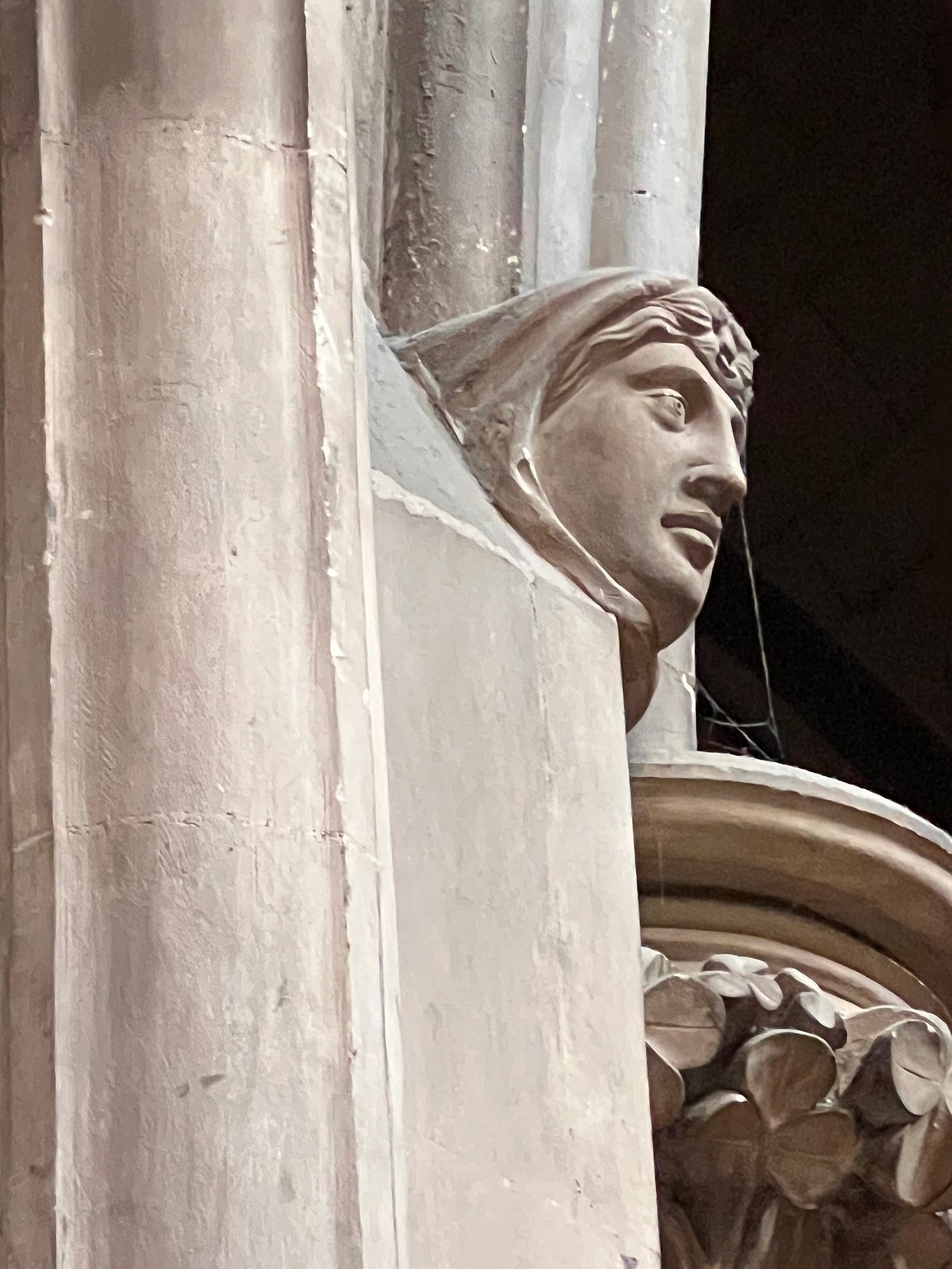Using AI to Analyze Secondary Sources
Thoughts from the classroom trenches:
A class I was teaching ended on Sunday. On Monday a student emailed to say he’d be submitting his final project later that day and since the school allowed a seven-day grace period on assignments, he knew that was fine—just letting me know. HUH? WHAT? No, there was no seven-day grace period. The last day of class means the last day of class. Do people just make up policies and assume that everyone will go along with it?
I love this image I took in St Patrick’s Cathedral, Dublin. I didn’t realize until later that there was a spider web draped from this stone lady’s face. How hard is it to clean these columns? Rather difficult, I should imagine.
SO . . . I’ve been using AI to analyze all the dozens and dozens of journal articles I’m going through that touch on the subject of Irish sisters (religious) in Texas. Specifically, I’m using ChatGPT and Google LLM Notebook. Both are excellent at analyzing articles and how they might relate to my topic’s argument. And once I have a few articles uploaded, then I can ask the AI how the articles “speak” to each other. Doing this with a few dozen articles would take me weeks but AI can do it in a few hours. It’s an iterative process, with me going back-and-forth, reading parts of the articles and talking with AI and I find it so, so helpful. It’s like I have a curious research assistant that never gets tired (I do pay for the $20/month version of chat. I don’t think you can do this with the free version).
If you aren’t using AI as a scholar, perhaps you should consider finding ways, like this one, where you can get assistance. The point isn’t that AI will do it for you—but that it can work with you to make you more efficient.
How are you using AI in a responsible way with your work?



